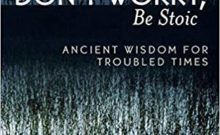The scientific community is presented with a disease. Resources are marshalled and medical researchers commit themselves to finding a cure. This is how the science of medicine works, and we see it right now as scientists around the world are racing to find treatments and a vaccine for the Corona virus.
If you wanted any evidence that psychiatry is not a
science, you need look no further than what happened to the pharmaceutical industry
in the 1980s and 1990s with anxiety. Just like George decided one day to do the
opposite of what he usually did, the psychiatric drug companies go in the
opposite direction of medical research. Instead of being presented with a
disease and finding a drug to cure it, they create a drug and then try to come
up with a disease. In her book Mindfixers, Anne Harrington reveals how drug
companies managed to reverse this order: not being presented with a disease and
then coming up with a drug to treat it. Instead, being presented with a drug
and going in search of a disease it can treat.
Here are a few examples:
1.In 1981Upjohn received approval for the benzodiazepine Xanax. Its main ingredient was developed in1960s to treat anxiety neurosis. Unfortunately by the time the drug was approved, the DSM 3 (1980) eliminated anxiety neurosis. To add insult to injury, the use of benzodiazepines was in decline. A psychiatrist hired as a consultant by Upjohn came up with the brilliant idea to use Xanax to treat the newly established disease: Panic disorder. FDA granted approval in 1990 and Xanax starts to market itself as the “first and only medication approved for panic disorder” despite the fact that it is typical benzodiazepine with no special properties that other benzos lack. In addition, Xanax is also approved to treat general anxiety disorder. The year it went off patent it is the fifth most widely prescribed drug in U.S.
2.At about the same time, drug companies start looking for new markets for SSRI’s (selective serotonin uptake reinhibitor) about to go off patent. Just like Willy Sutton robbed banks because that’s where the money was, drug companies turned to anxiety for the same reason. As Xanax had demonstrated, that’s where the money was. Drug companies decide to remake SSRIs as treatment for specific forms of anxiety. In 1999 the pharmaceutical firm SKB received approval for the drug Paxil to treat Social Anxiety Disorder. In order to sell the disease, they launch a public advertising campaign and create a social advocacy group (SAD coalition), not out of a preexisting group of patients diagnosed with the disease but, well, out of thin air. The rest is advertising history. The PR campaigns resulted in more than a billion references to SAD, up from around 50 in previous years, almost all mentioned that Paxil is the only treatment. Again, there is nothing special about Paxil—it is a typical SSRI and there is no reason for a rational person to think it has any special properties that make it uniquely qualified to treat SAD, as it is presenting itself.
3. By now you should be familiar with the story. In 1999 Pfizer does essentially the same thing, receiving approval to market another SSRI, Zoloft, as the only drug approved to treat the newly established Post Traumatic Stress Disorder. Following the playbook, Pfizzer creates its own advocacy group (PTSD alliance) with zero members but there just in case you need them.
Why spend time and money developing a new drug when you can just conjure up a new disease for one of your existing drugs to treat? As Harrington concludes: “The strategy of repurposing old drugs for new disorders that in many cases people had not known they had, was highly successful.”

